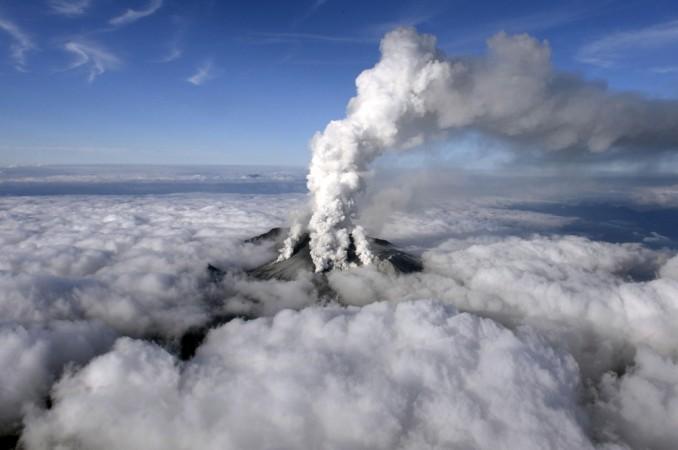
About 250 climbers had been enjoying the lush foliage near the summit of Mount Ontake, a popular hiking destination in central Japan, when it erupted without any warning on 27 September.
Huge, black plumes of smoke unexpectedly rose from Japan's deadliest volcano around 11:52 am on Saturday, while rocks showered down from the sky, leaving a carpet of volcanic ash on the ground.
The death toll from the country's deadliest volcanic eruption has topped 54, according to Wired. The victims include hiking enthusiasts from an insurance company, members of nature lovers' group studying wild plants and a construction manager, in whose dented camera was found around 100 photos he had captured during the hike, to show his wife.
Rescue workers on Tuesday found two bodies in the ash, out of which one had to be airlifted by a military helicopter, and the bodies of at least 12 hikers are still unaccounted for. A search operation involving some 1,000 police officers, troops and firefighters resumed early on Tuesday after a two-day hiatus because of atrocious weather.

Many climbers who barely escaped said they never imagined the 3,067 meter Mount Ontake would erupt. Despite the country's robust volcano monitoring system, Ontake volcanic eruption occurred with virtually no warning.
Scientists suspect it as a phreatic eruption caused by steam rather than magma. It was a hydrovolcanic explosion, in which a blast of steam is generated when groundwater is heated to extremely high temperatures by magma.
Meanwhile, Japan has 110 active volcanoes, which makes up 7% of those in the world and is highly prone to earthquakes.
"In Japan, there has been increased seismic activity, which leads to increased volcanic activity," said Yoshinobu Tsuji, a special visiting research fellow at the Building Research Institute, told Stars and Stripes.
In recent decades, the nation has been hit by such giant temblors as the 1995 Great Hanshin Earthquake and the 2011 Great East Japan Earthquake. However, the eruption of Ontake volcano on 7 September is by far the deadliest volcanic eruption in the country since World War II.
"Over the past century, volcanoes in Japan have been relatively dormant compared to the 17th to 19th centuries," said Toshitsugu Fujii, an emeritus professor at the University of Tokyo and the head of the Coordinating Committee for Prediction for Volcanic Eruptions. "However, it shouldn't be a surprise whenever and wherever a volcano erupts. It's Japan's fate to have volcanic eruptions.


















